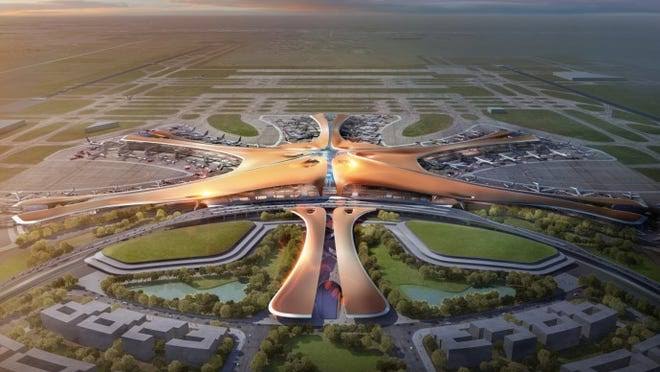Airports are more than just places to land and take off; they are living, breathing ecosystems that mirror the prosperity, innovation, and international linkages of the communities they serve. The race to become one of the world’s biggest airports is heating up in 2025. Air travel is becoming more popular, international trade is growing, and tourism is reaching new heights, therefore airports throughout the world have been improving their capacity to handle more people and more cargo. The ten largest airports in the globe in 2025 are works of art, testaments to the ingenuity and aspiration of the human race. With their expansive landscapes, modern terminals, cargo facilities, and passenger amenities, these airports are often bigger than whole cities. The ability of these airports to efficiently process millions of passengers, thousands of flights, and tonnes of cargo every day is more important than their size or geographical area. Whether it’s a desert megastructure in the Middle East or an expansive aviation hub in North America or Asia, these enormous transport hubs are vital in linking people and companies across boundaries. They are the hubs of globalisation, the places that make everything seem more localised, faster, and more linked.
These Are The Top 10 Biggest Airport In The World
1. King Fahd International Airport (DMM) – Dammam, Saudi Arabia
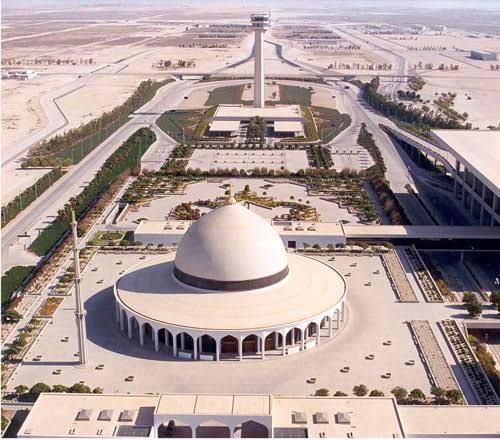
As the unrivalled colossus of airport real estate, King Fahd International Airport (DMM) is the dominant force in the aviation industry. This Saudi Arabian multinational corporation covers an astounding 776 square kilometres of land, which is almost as much as the five boroughs of New York City combined. The Saudi government eventually transformed it into a commercial hub, and it formally opened its doors in 1999. Initially, it was intended to serve as an airbase for the United States during times of regional strife.
2. Denver International Airport (DEN) – Denver, Colorado, United States

As the largest airport in North America, Denver International Airport (DEN) is also the second largest airport in the world, with a total size of 135.7 square kilometres. DEN was opened in 1995, and it was planned with a substantial amount of opportunity for expansion. This forethought has proven to be extremely important as the number of passengers continues to increase. The characteristic black and white tensile fabric roof of the airport is designed to look like the snow-covered Rocky Mountains that serve as the airport’s background. Due to the fact that it processes more than 69 million passengers yearly, DEN is not only massive but also capable of carrying out its operations.
3. Dallas/Fort Worth International Airport (DFW) Dallas, Texas, United States

serves as a major hub for American Airlines and spans an impressive 69.6 square kilometers, making it one of the largest airports in the United States by land area. Strategically situated between the cities of Dallas and Fort Worth, Texas, DFW plays a critical role in connecting passengers across North America and beyond. Its central location enables efficient access to a vast network of domestic routes and international destinations across Europe, Asia, and Latin America. In addition to its size and connectivity, the airport is known for its modern infrastructure, numerous amenities, and ongoing investments in technology and sustainability, reinforcing its status as a key global aviation gateway.
4. Orlando International Airport (MCO), United States
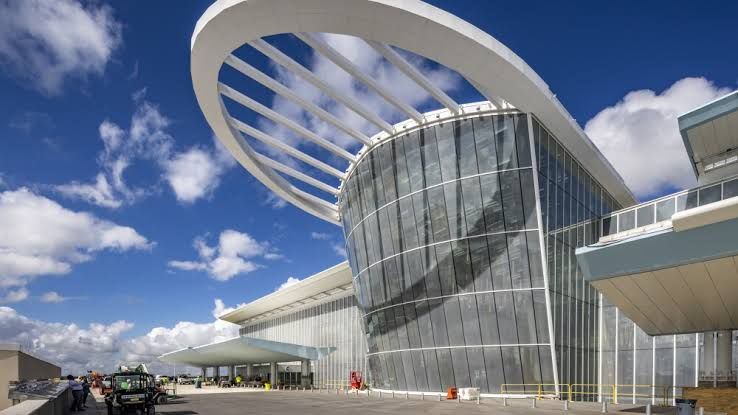
Serving as a primary gateway to popular tourist destinations such as Walt Disney World and Universal Studios, Orlando International Airport (MCO) plays a crucial role in Florida’s thriving tourism economy. Spanning an impressive 53.8 square kilometres, it is one of the largest commercial airports in the United States by land area. MCO handles millions of passengers annually, acting as a vital hub for both domestic and international travelers. Its strategic location in central Florida and modern infrastructure make it a key entry point for visitors flocking to the state’s world-renowned theme parks, resorts, and convention centers.
5. Washington Dulles International Airport (IAD), United States

This airport serves the Washington D.C. metropolitan area and is renowned for its striking, modernist architecture designed by famed architect Eero Saarinen. Opened in 1962, it is not only a gateway to the U.S. capital but also a symbol of mid-century American design. As one of the primary international airports on the East Coast, it handles millions of passengers annually, connecting Washington D.C. with major cities around the world. Its iconic main terminal and sweeping roofline make it instantly recognizable, while its strategic location and extensive flight network make it a crucial hub for both international and domestic travelers.
6. Beijing Daxing International Airport (PKX), China
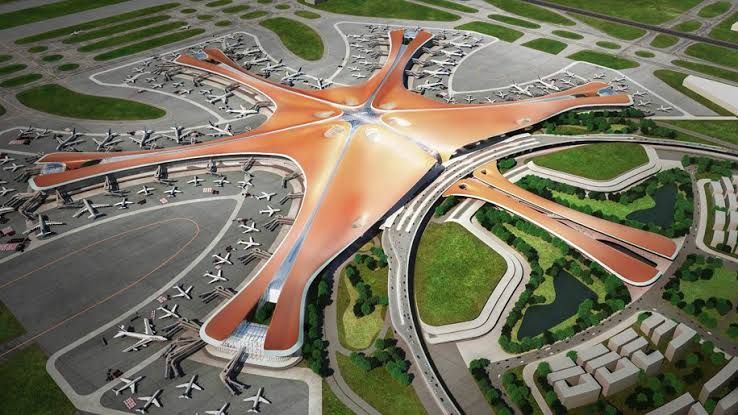
Beijing Daxing, which opened in late 2019, is now one of the world’s largest airports. Its purpose is to improve connectivity in Asia and relieve congestion at Beijing Capital International Airport. The world’s busiest airports handle a disproportionate share of the world’s air traffic because of the enormous areas they occupy and the sophisticated technologies they employ for aircraft operations, passenger services, and logistics. These airports will play an important role in shaping aviation infrastructure in the future and will remain connected as air travel continues to rise.
7. Dubai International Airport (DXB), UAE
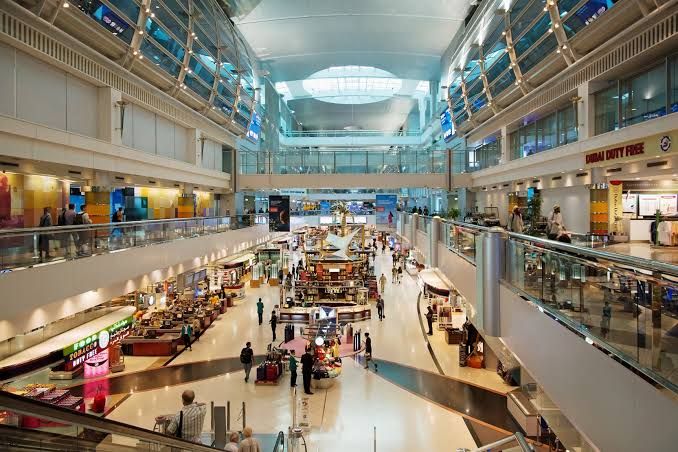
Dubai International Airport, commonly known by its IATA code DXB, is the world’s busiest airport for international passenger traffic. Located in the heart of Dubai, UAE, it serves as a major gateway between the East and West. Despite not being the largest airport in terms of land area, its strategic location, world-class facilities, and exceptional connectivity have made it a central hub for global air travel.
8. Guangzhou Baiyun International Airport (CAN), China
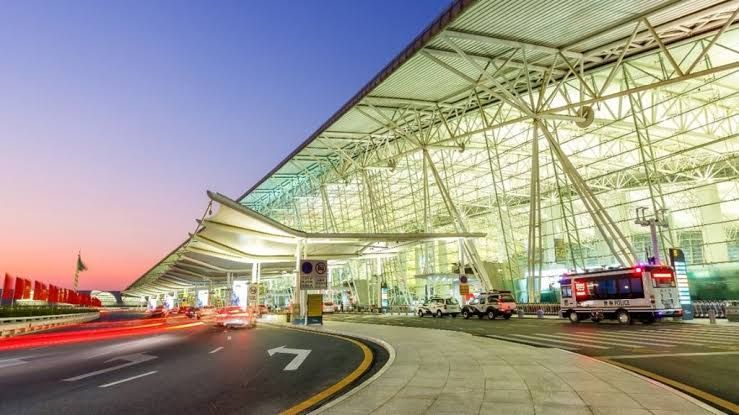
One of the busiest and most iconic airports in the world, Los Angeles International Airport (LAX) serves as a crucial hub for both domestic and international travel. Located in the Westchester neighborhood of Los Angeles, California, LAX connects millions of passengers annually to destinations across North America, Asia, Europe, Oceania, and Latin America. The airport is a major gateway to the United States, particularly for travelers coming from the Pacific Rim.
LAX is served by all major U.S. airlines and dozens of international carriers, making it a central point for global air travel.
9. Indira Gandhi International Airport (DEL), India
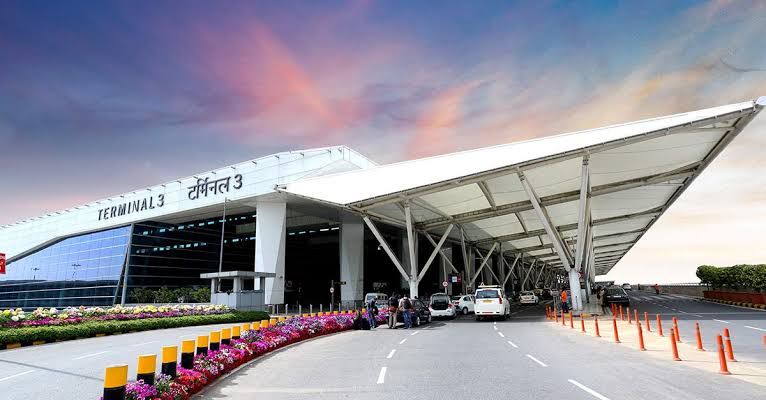 Indira Gandhi International Airport, located in Delhi, is the busiest and largest airport in India in terms of passenger traffic and cargo handling. Named after the former Prime Minister Indira Gandhi, the airport is a critical hub for both domestic and international travel. It serves as the primary gateway to India’s capital and connects to over 140 destinations worldwide.
Indira Gandhi International Airport, located in Delhi, is the busiest and largest airport in India in terms of passenger traffic and cargo handling. Named after the former Prime Minister Indira Gandhi, the airport is a critical hub for both domestic and international travel. It serves as the primary gateway to India’s capital and connects to over 140 destinations worldwide.
10. Paris Charles de Gaulle Airport (CDG), France
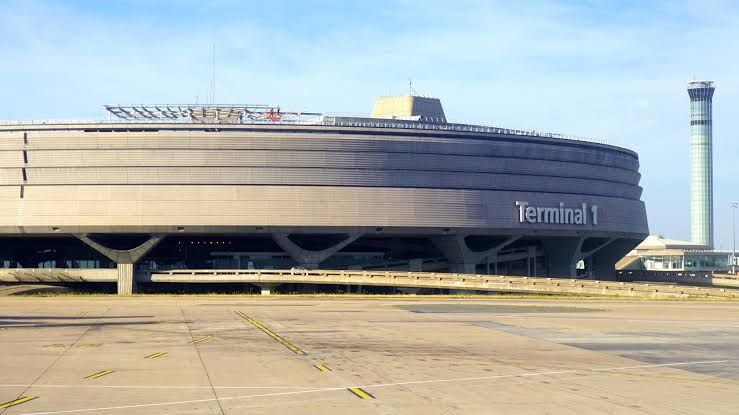 CDG serves as the main hub for Air France, the national flag carrier, and is a key member of the SkyTeam airline alliance. The airport operates three terminals, with Terminal 2 being the largest and serving as the central base for Air France and its partners. It is renowned for its extensive range of international destinations, with direct flights to major cities across Europe, Asia, the Americas, the Middle East, and Africa.
CDG serves as the main hub for Air France, the national flag carrier, and is a key member of the SkyTeam airline alliance. The airport operates three terminals, with Terminal 2 being the largest and serving as the central base for Air France and its partners. It is renowned for its extensive range of international destinations, with direct flights to major cities across Europe, Asia, the Americas, the Middle East, and Africa.
